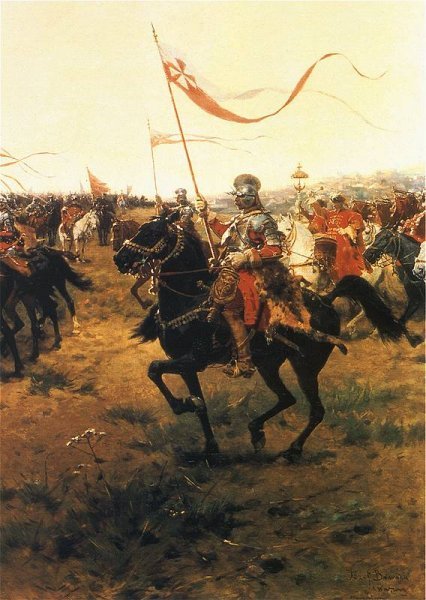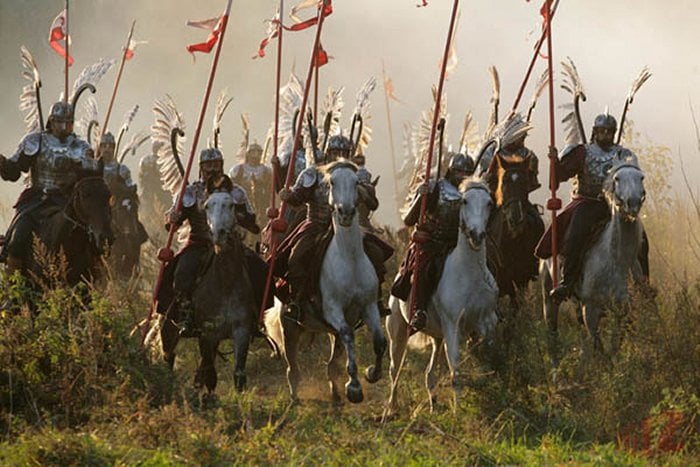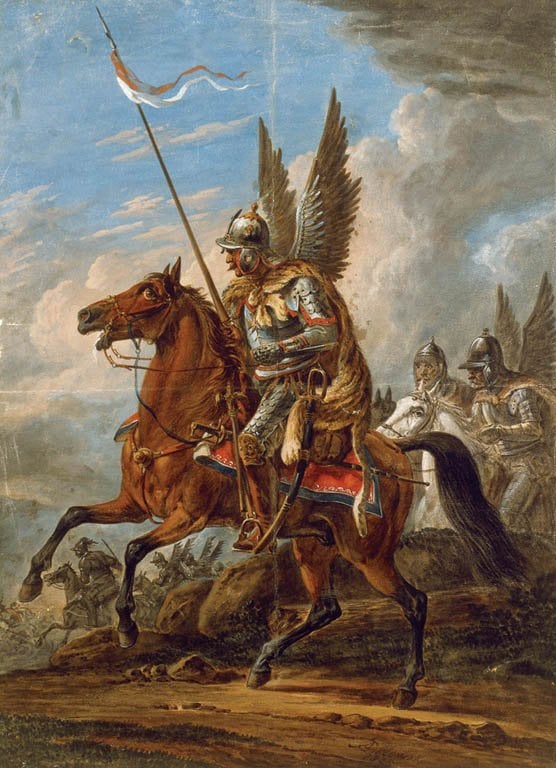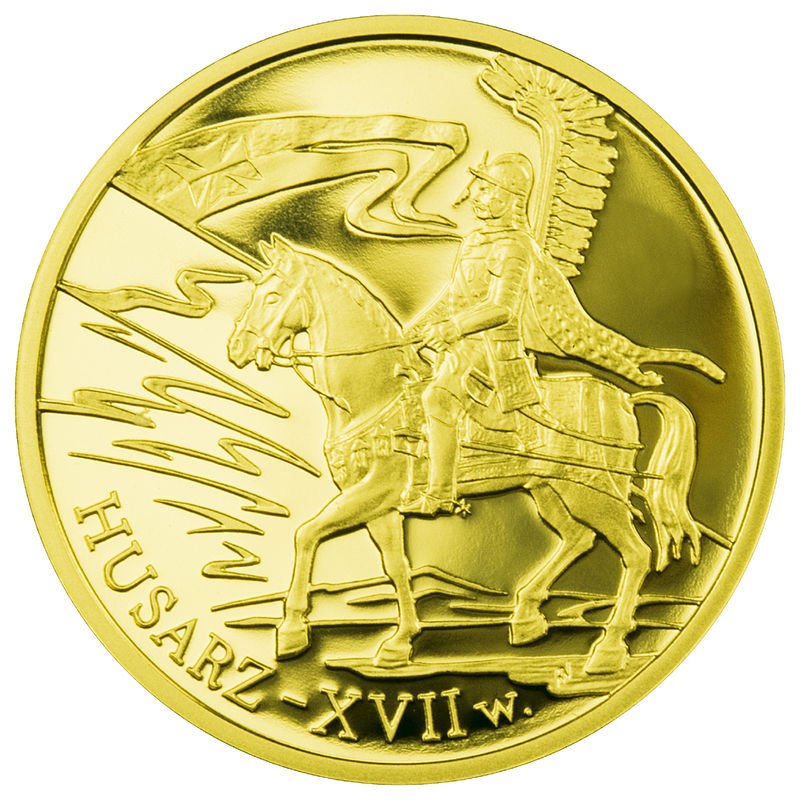Winged Hussars: Facts And History About The Polish Warriors, Their Armor And Military Tactics
MessageToEagle.com – The Winged Hussars were one of the most effective military forces in the world. They lost only a fraction of their battles and they were undefeated for 125 years. Today, they are still remembered for their outstanding courage as well as their remarkable armor and clever military tactics.The Winged Hussars were known for the wings with long feathers worn on their backs or attached to the saddles of their horses, which during a charge uttered a sound of vibrating feathers that frightened enemy infantry. Who were these courageous warriors and what made them so successful on the battlefield? In this article we examine the history of the Winged Hussars.
Hussars March - Polish Patriotic Music Anthem | Polonez Husarii - polska muzyka patriotyczna
Who were the Winged Hussars?
The word “hussar” derives from the Hungarian Huszár. Exiled Serbian warriors introduced hussar horsemen – light cavalry armed with hollowed lance, Balkan-type shield, and sabre.The first recorded evidence of hussars can be found in Polish treasury books dated 1500. Initially these troops were considered only light cavalry and were composed mainly of foreign mercenaries, called “Racowie”, (in Polish) meaning “from the Serbian state of Ras”.
By the second half of the 16th century and after Stephen Báthory’s reforms, hussars had been transformed into heavily armored shock cavalry.
The true “winged hussar” arrived with the reforms of the King of Poland and Grand Duke of Lithuania Stephen Bathory in the 1570s and was later led by the King of Poland and Grand Duke of Lithuania Jan III Sobieski.
Until the reforms of the 1770s, the husaria banners were considered the elite of the Polish cavalry. It was not until the 1570s that the Polish Hussars finally came into their full glory. This was the Golden era, when the Polish-Lithuanian Commonwealth had become one of the largest, most powerful and most populated nation in all of Europe. To differ from Hungarian hussars, Polish-Lithuanian hussars came with their own style and their armor was entirely different.
Each of the hussars was recruited from wealthier Polish and Lithuanian nobility, and together they were referred to as the “szlachta”.
Winged Hussars and their famous battles
Winged Hussars were used as elite Polish-Lithuanian shock troops for over two centuries. The Winged Hussars fought many battles against various enemies, most of which they won.In the battles of Lubiszew in 1577, Byczyna (1588), Kokenhausen (1601), Kircholm (1605), Kluszyn (1610), Chocim (1621), Martynów (1624), Trzciana (1629), Ochmatów (1644), Beresteczko (1651), Polonka (1660), Cudnów (1660), Chocim (1673), Lwów (1675), Vienna (1683), and Párkány (1683), they proved to be the decisive factor against often overwhelming odds.
The Battle of Lubiszew was one of the most important battles fought during the reign of the Polish-Lithuanian Commonwealth. It was waged against Danzig, whose citizens refused to accept the election of Stephen Batory as King of the Commonwealth and thus ensued the two-year Danzig Rebellion. The battle took place on April 17, 1577 to the west of the town of Tczew (Dirschau), southeast of Gdansk on the left bank of the Vistula River. Despite their overwhelming numbers, the Danzig army was utterly defeated by the army of Jan Zborowskik. With the Battle of Lubiszew in 1577 the ‘Golden Age’ of the husaria began.
One of the greatest victories of the Polish Hussars took place on June 23, 1601 in the Battle of Kokenhausen. Despite overwhelming numbers, Polish forces were able to defeat the Swedish army. In the aftermath of the battle, the Poles had lost 200 men, while the Swedes lost 2,000 men including almost all of their infantry. The 2,000 Swedes who had besieged Koknese Castle, wanting no part in the battle, had surrendered to the Poles, their weapons confiscated by the Polish forces.
The Battle of Kircholm, one of the major battles in the Polish-Swedish War, was fought on September 27, 1605.
The Winged Hussars launched a devastating charge against the enemy which ended the battle in the decisive victory of the Polish-Lithuanian forces.
It is remembered and celebrated to this day as one of the greatest triumphs of the Polish Hussars. The battle was decided in all of 20 minutes!
In the Battle of Kluszyn 1610, during the Polish–Muscovite War, the Russians outnumbered the Commonwealth army 5 to 1, yet were heavily defeated.
The armor and military tactics of the Winged Hussars
Why the hussars had huge wings on their back remains a subject of speculation, but most likely this kind of armor was used as part of psychological warfare to scare the enemy.These wings were made from wooden frame and eagle, ostrich or swan feathers.
Some of them suggest that wings were worn to make the charge look larger and to scare enemy horses. There are also historians who suggest that these wings offered some protection from sabers or Tatar lassos.
The Polish-Lithuanian hussars’ primary battle tactic was the charge. They carried the charge to, and through the enemy. This was a key to their victories. They also tended to repeat the charge several times until the enemy formation broke (they had supply wagons with spare lances). The charging attack and heavy weight of their armor and horses guaranteed victory for nearly two centuries. The hussars fought with a long lance, a szabla (sabre), 1 or 2 pistols, and often with a carbine or arquebus, known in Polish as a bandolet, and sometimes a war hammer or light axe.
The Hussar’s Lance was constructed differently than medieval lances, as its center was bored out to save weight, and it was longer than its precursors – many were even 5.5m long- but were still lighter than western lances.
As guns and artillery improved, heavy cavalry had less and less uses on battlefield. Winged Hussars were finally disbanded in 1776, when they were succeeded by much lighter Uhlans, light cavalry armed with lances, sabres and pistols.






